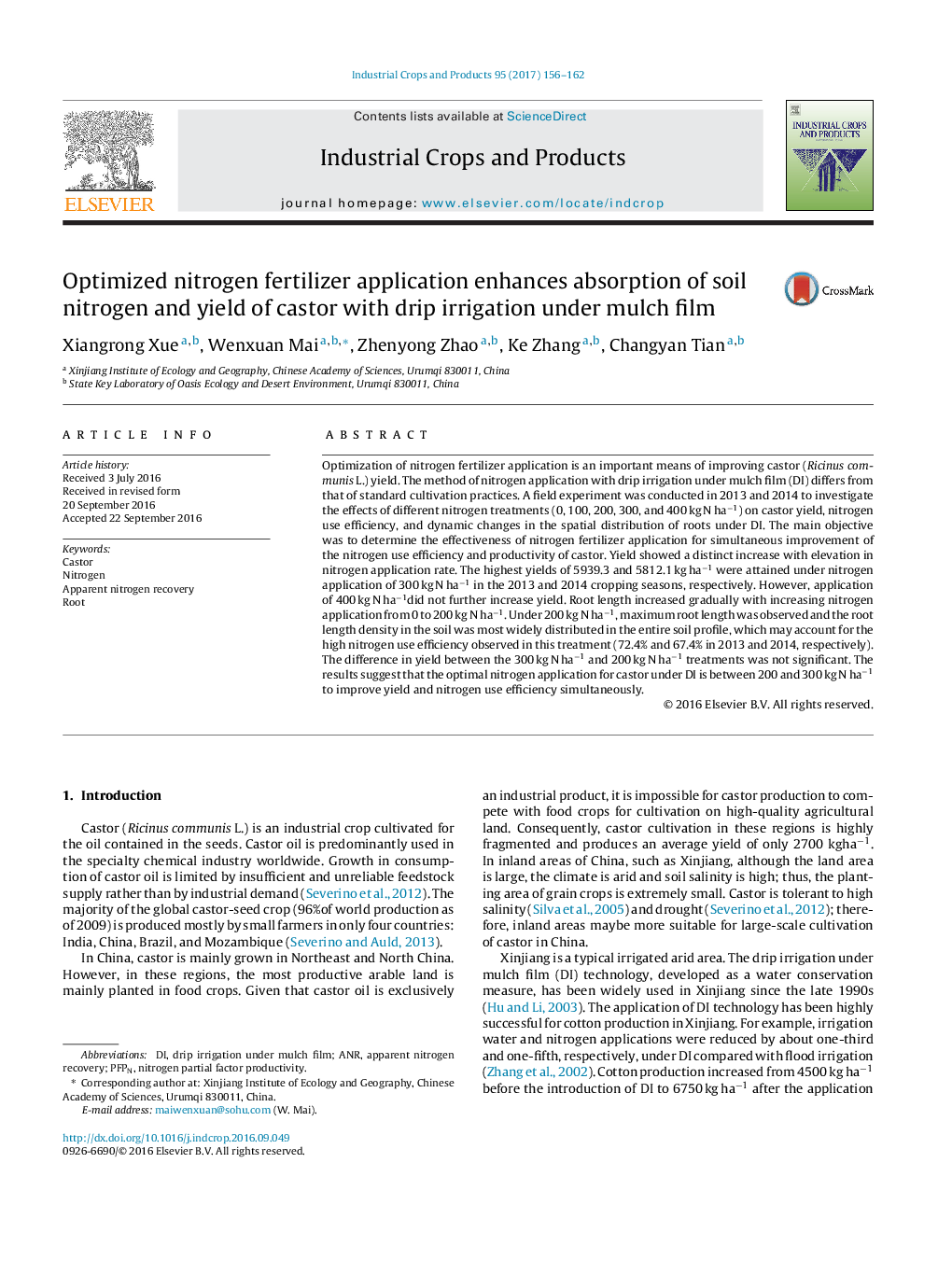| کد مقاله | کد نشریه | سال انتشار | مقاله انگلیسی | نسخه تمام متن |
|---|---|---|---|---|
| 4511934 | 1624815 | 2017 | 7 صفحه PDF | دانلود رایگان |
• The highest castor yields were attained under 300 kg N ha−1 application.
• Maximal root length and nitrogen use efficiency were observed under 200 kg N ha−1.
• Optimal nitrogen dose for castor is between 200 and 300 kg N ha−1.
Optimization of nitrogen fertilizer application is an important means of improving castor (Ricinus communis L.) yield. The method of nitrogen application with drip irrigation under mulch film (DI) differs from that of standard cultivation practices. A field experiment was conducted in 2013 and 2014 to investigate the effects of different nitrogen treatments (0, 100, 200, 300, and 400 kg N ha−1) on castor yield, nitrogen use efficiency, and dynamic changes in the spatial distribution of roots under DI. The main objective was to determine the effectiveness of nitrogen fertilizer application for simultaneous improvement of the nitrogen use efficiency and productivity of castor. Yield showed a distinct increase with elevation in nitrogen application rate. The highest yields of 5939.3 and 5812.1 kg ha−1 were attained under nitrogen application of 300 kg N ha−1 in the 2013 and 2014 cropping seasons, respectively. However, application of 400 kg N ha−1did not further increase yield. Root length increased gradually with increasing nitrogen application from 0 to 200 kg N ha−1. Under 200 kg N ha−1, maximum root length was observed and the root length density in the soil was most widely distributed in the entire soil profile, which may account for the high nitrogen use efficiency observed in this treatment (72.4% and 67.4% in 2013 and 2014, respectively). The difference in yield between the 300 kg N ha−1 and 200 kg N ha−1 treatments was not significant. The results suggest that the optimal nitrogen application for castor under DI is between 200 and 300 kg N ha−1 to improve yield and nitrogen use efficiency simultaneously.
Journal: Industrial Crops and Products - Volume 95, January 2017, Pages 156–162
